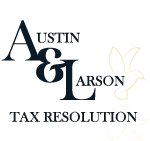Taxes are inevitable, but minimizing them doesn’t have to be! This guide explores legal strategies for individuals and families in the USA to reduce their tax burden, covering income, deductions, credits, savings plans, and more. Start maximizing your financial advantage today!

Reducing Taxable Income
Retirement Accounts:
401(k):
- Employer-sponsored retirement plan.
- Contributions come directly from your paycheck before taxes, lowering your taxable income.
- 2024 contribution limit: $23,000 per year ($29,000 for ages 50 and over).
- Catch-up contribution: Additional $7,500 allowed for ages 50 and over.
- Employer match: Many employers match a portion of your contributions, essentially free money for retirement.
- Taxation: Money grows tax-deferred, taxed only upon withdrawal (potentially at a lower tax rate in retirement).
IRAs (Individual Retirement Accounts):
- Individual retirement plan open to most individuals regardless of employment status.
- Two main types:
- Traditional IRA: Contributions are tax-deductible, similar to 401(k). Money grows tax-deferred, taxed upon withdrawal.
- Roth IRA: Contributions are not tax-deductible, but withdrawals in retirement are tax-free (if certain conditions are met). Money grows tax-free.
- 2024 contribution limit: $7,000 per year ($8,000 for ages 50 and over).
- No catch-up contribution for traditional IRAs.
- Roth IRA income limits apply (phase-out for higher earners).
SEP IRAs (Simplified Employee Pension):
- For self-employed individuals and small business owners.
- Contribute up to 25% of net business income (with a $66,000 maximum in 2024).
- Contributions are tax-deductible, money grows tax-deferred, taxed upon withdrawal.
Simple IRAs (Savings Incentive Match Plan for Employees):
- Designed for small businesses with up to 100 employees.
- Employers must contribute either a matching contribution or a fixed percentage of employee salary.
- Employee contributions are tax-deductible, money grows tax-deferred, taxed upon withdrawal.
Health Savings Accounts (HSAs):
- Tax-advantaged account for qualified individuals with high-deductible health plans.
- Contributions are tax-deductible (even if you don’t itemize).
- Money grows tax-free and can be used tax-free for qualified medical expenses (current and future).
- 2024 contribution limit: $3,850 for individuals, $7,750 for families.
- Catch-up contribution: $1,450 allowed for ages 55 and over.
- Unused funds roll over year-to-year, building a safety net for future medical needs.
Flexible Spending Accounts (FSAs):
- Employer-sponsored accounts used for pre-tax contributions to cover specific expenses.
- Two main types:
- Dependent Care FSA: Used for childcare and eldercare expenses.
- Medical FSA: Used for qualified medical expenses not covered by insurance.
- 2024 contribution limit: Varies by employer, typically ranging from $2,850 to $5,750.
- Limitations: “Use-it-or-lose-it” rule applies in most cases (except for certain rollover provisions).
- Carefully consider your spending habits and the potential for forfeiture before enrolling.
Mortgage Interest and Property Taxes:
Conditions:
- You must own the home and itemize deductions.
- The mortgage must be secured by the home (primary or secondary residence).
- Points paid to acquire the mortgage might be deductible (specific rules apply).
- Property taxes must be for the home and paid during the tax year.
Potential Limitations:
- The deduction for mortgage interest is limited to the interest on the first $750,000 of mortgage debt ($375,000 for married filing separately).
- State and local tax (SALT) deduction capped at $10,000 in total (includes property taxes and state/local income taxes).
- Consult the IRS website for current limitations and exceptions.
Charitable Donations:
Record-keeping:
- Track cash donations with bank statements or receipts.
- For non-cash donations (property or vehicles): obtain a qualified appraisal and written acknowledgement from the charity.
- Maintain records for at least 7 years after filing your return.
Substantiation Requirements:
- For cash donations exceeding $250: written acknowledgement from the charity with name, date, and amount.
- For non-cash donations exceeding $500: documentation of appraisal and qualified charity status.
- Consult the IRS website for detailed substantiation requirements.
State and Local Taxes:
Sales Tax Deduction:
- Only available if you don’t itemize state and local income taxes.
- You can use IRS sales tax tables or track actual sales tax paid throughout the year with receipts.
- Specific rules and limitations apply (consult the IRS website).
State Variations:
- Some states offer additional deductible state and local taxes (e.g., cigarette taxes).
- Research your specific state’s regulations for detailed information.
Other Potential Deductions:
Medical Expenses:
- Only deductible if they exceed 7.5% of your adjusted gross income (AGI).
- Qualified expenses include medical, dental, vision care, prescriptions, and some long-term care costs.
- Maintain detailed records of expenses and receipts.
Home Office Expenses (for qualified individuals):
- You must use the home office exclusively and regularly for business.
- Two methods available: simplified method or regular method with detailed expense tracking.
- Consult the IRS website for eligibility requirements and specific rules.
Additional Notes:
- This information is for general informational purposes only and does not constitute professional tax advice.
- Always consult with a tax professional for personalized guidance on itemized deductions and potential limitations based on your specific situation.
- The IRS website offers additional resources and clarification on specific deductions and requirements.
Remember:
- Eligibility and contribution limits may vary based on your specific circumstances.
- Consult with a tax professional or financial advisor for personalized advice on which pre-tax contribution options are best for you.
- Carefully review the rules and limitations of each account type before contributing.

Advanced Tax Strategies
Municipal Bonds: Tax-exempt income from state and local government bonds.
What are Municipal Bonds?
Municipal bonds are debt securities issued by state and local governments to finance public projects like infrastructure, schools, hospitals, and parks. Investors who purchase these bonds loan money to the issuer and receive interest payments in return.
Tax Advantages of Municipal Bonds:
The primary benefit of municipal bonds is their tax-exempt status. Interest income earned on most municipal bonds is:
- Exempt from federal income tax: This can significantly reduce your overall tax liability, especially if you fall into a high tax bracket.
- Exempt from state and local income tax in the issuer’s state: This further increases the tax advantage for in-state investors.
Types of Municipal Bonds:
- General Obligation Bonds (GO Bonds): Backed by the full faith and credit of the issuing government, considered the safest type of muni bond but usually offer lower yields.
- Revenue Bonds: Secured by the revenue generated by a specific project, offer potentially higher yields but carry more risk than GO bonds.
- Private Activity Bonds: Used to finance private projects with public benefits, may be exempt from federal income tax but subject to the Alternative Minimum Tax (AMT).
Considerations before Investing:
- Creditworthiness of the issuer: Assess the financial health of the issuing government to gauge the risk of default.
- Yield vs. Tax Exemption: Compare the after-tax yield of a muni bond to the taxable yield of other investments to determine its true benefit.
- Liquidity: Municipal bonds can be less liquid than other investments, making it harder to sell them quickly if needed.
- State Tax Exemption: If you invest in out-of-state munis, the interest may be taxable in your state.
Strategies for Investing in Municipal Bonds:
- Invest in your home state: Maximize tax benefits by buying bonds issued by your state or local government.
- Diversify your portfolio: Invest in a variety of municipal bonds to spread risk and exposure to different issuers and projects.
- Consider bond funds: Invest in a muni bond fund for professional management and diversification without individually selecting bonds.
- Consult a financial advisor: Seek professional advice to ensure municipal bonds align with your overall investment goals and tax situation.
Roth Conversions:
Converting traditional retirement accounts (like IRAs and 401(k)s) to Roth accounts involves paying taxes upfront on the converted amount but allows for tax-free withdrawals in retirement. This strategy can be beneficial for:
- Individuals expecting lower tax brackets in retirement: If you anticipate being in a lower tax bracket when you retire compared to your current one, paying taxes now at a lower rate could save you money in the long run.
- Young individuals with a long investment horizon: The tax-free growth within a Roth account can compound significantly over time, especially for younger individuals with decades until retirement.
- Maximizing estate value for heirs: Roth accounts pass to heirs tax-free, potentially reducing their tax burden when they inherit the funds.
However, Roth conversions also have drawbacks:
- Upfront tax burden: You’ll pay income tax on the converted amount, potentially impacting your cash flow in the short term.
- Income limitations: Eligibility for Roth conversions is subject to income limits, and contributions to Roth IRAs have income restrictions.
- Planning and timing considerations: Careful planning and timing are crucial to optimize the benefits of Roth conversions and avoid unintended tax consequences.
Charitable Giving Strategies:
Strategic charitable giving can offer tax benefits while supporting causes you care about. Here are some key strategies:
- Bunching deductions: Instead of donating small amounts annually, consider grouping large donations into specific years to potentially exceed the standard deduction threshold and maximize your itemized deduction.
- Donating appreciated assets: Donating appreciated assets like stocks or property to qualified charities allows you to avoid capital gains taxes on the appreciated value while receiving a charitable deduction for the full fair market value.
- Using donor-advised funds (DAFs): Setting up a DAF allows you to contribute assets upfront and receive an immediate tax deduction while granting distributions to charities over time according to your preferences.
Remember, these strategies have specific rules and limitations. Consult with a tax professional to understand the details and their applicability to your situation.
Importance of Professional Advice:
Navigating the complexities of the tax code requires expertise, and seeking professional advice from a qualified tax advisor offers several benefits:
- Personalized strategies: A tax advisor can analyze your unique financial situation and recommend tailored strategies to maximize your tax savings.
- Staying updated on regulations: Tax laws are constantly changing, and a professional keeps you informed about relevant updates and their impact.
- Avoiding costly mistakes: Improper tax planning can lead to penalties and missed opportunities. A professional can help you navigate the rules and avoid costly errors.
- Peace of mind: Knowing you have a qualified advisor managing your tax matters can provide peace of mind and allow you to focus on other financial goals.
While seeking professional advice may incur additional costs, the potential savings and peace of mind often outweigh the expense for individuals with complex tax situations or significant assets.
Remember, this information is for general informational purposes only and does not constitute professional tax advice. Always consult with a qualified tax advisor to discuss your specific situation and tailor strategies to your unique needs.
Remember, investing in municipal bonds involves certain risks, and this information is not financial advice. Conduct your own research and consult with a qualified professional before making any investment decisions.

Utilizing Tax Credits and Benefits
Earned Income Tax Credit (EITC):
- Eligibility: Earned income below a certain threshold (based on filing status and number of dependents), must have a valid Social Security number, and cannot be a dependent on someone else’s return.
- Phase-out rules: The credit amount gradually decreases as earned income increases beyond the eligibility threshold. Different phase-out rules apply depending on filing status and number of qualifying children.
- Impact on overall tax bill: Can significantly reduce tax liability or even result in a refund even if no income tax was withheld. EITC amount varies based on income, filing status, and number of qualifying children.
Child Tax Credit and Additional Child Tax Credit:
- Qualifying dependents: Must be under 18, a U.S. citizen or resident alien, and live with you for more than half the year. Additional rules apply for adopted children, foster children, and siblings/grandchildren you care for.
- Amount received: Base credit of $2,000 per qualifying child in 2023, with an additional $500 per child under 6. Phase-out rules apply based on adjusted gross income (AGI).
- Potential advance payments: In 2023, half of the credit was distributed as monthly advance payments from July to December. This option may or may not be available in future years.
Education Credits and Deductions:
- American Opportunity Tax Credit (AOTC): Up to $2,500 per student for qualified tuition and fees paid for the first four years of post-secondary education. Phase-out rules apply based on modified adjusted gross income (MAGI).
- Lifetime Learning Credit (LLC): Up to $2,000 per taxpayer per year for qualified tuition and fees paid for any post-secondary education. No limit on the number of years claimed.
- Qualified expenses: Tuition, fees, required course materials (books, supplies) for eligible programs at accredited institutions. Room and board, living expenses, and non-required materials generally don’t qualify.
Other Credits:
- Retirement Savings Credit: Provides a credit for low- and moderate-income taxpayers who contribute to retirement accounts like IRAs and employer-sponsored plans. Phased out based on AGI.
- Student Loan Interest Deduction: Up to $2,500 of qualified student loan interest paid can be deducted from taxable income. Phased out based on MAGI.
- State-specific credits: Many states offer their own tax credits for educational expenses, childcare, energy efficiency, and other purposes. Research your state’s specific offerings.

Understanding the Tax Landscape
Federal and State Income Taxes: Differences, Brackets, and Impact
While both contribute to your overall tax burden, federal and state income taxes have distinct features:
Federal Income Tax:
- Levies tax on your taxable income based on progressive tax brackets, meaning higher earners pay a higher percentage.
- Current federal tax brackets (2024) range from 10% to 37%.
- Many deductions and credits are available to reduce your taxable income and tax bill.
State Income Tax:
- Varies significantly by state, with some having no income tax at all.
- States with income tax typically use flat tax rates or progressive brackets with lower rates than federal levels.
- Additional state-specific deductions and credits may be available.
Understanding the impact:
- Your combined federal and state tax rate determines your overall tax burden.
- Knowing your state’s tax system alongside federal regulations is crucial for accurate tax planning.
- Tools like the IRS tax bracket calculator and state-specific tax resources can help estimate your taxes.
Filing Options: Standard deduction vs. itemizing, choosing the right one
The IRS offers two options for claiming deductions on your tax return:
Standard deduction:
- A fixed dollar amount you can automatically deduct from your taxable income, regardless of individual expenses.
- Offers simplicity and eliminates the need to track and itemize every deduction.
- The standard deduction amount typically increases annually and varies based on filing status.
Itemizing deductions:
- Allows you to deduct specific qualified expenses from your taxable income, potentially lowering your tax burden further than the standard deduction.
- Requires detailed record-keeping and documentation of all claimed deductions.
- May be beneficial if your total itemized deductions exceed the standard deduction for your filing status.
Choosing the right option:
- Compare your estimated itemized deductions with the standard deduction for your filing status.
- The lower option reduces your taxable income and results in a lower tax bill.
- Consider the complexity of record-keeping and potential benefits before choosing to itemize.
Common Tax Deadlines: Importance of timely filing and avoiding penalties
Meeting tax deadlines is crucial to avoid penalties and unnecessary stress:
- April 15th: General due date for filing both federal and most state income tax returns for the previous year.
- October 15th: Extension deadline for filing federal income tax returns, with payment of estimated taxes due.
- State-specific deadlines: Each state may have different deadlines for filing and paying state income taxes.
- Penalties: Late filing typically incurs penalties and interest charges on unpaid taxes.
Importance of timely filing:
- Avoids penalties and potential IRS audits.
- Ensures you receive any eligible tax refunds promptly.
- Allows you to plan for future tax obligations better.
Tips:
- Mark your calendar with important tax deadlines.
- File electronically for faster processing and potential refund delays.
- Consider requesting an extension if unable to meet the filing deadline.
Resources and Support: IRS website, tax professionals, and software options
Navigating the tax system can be complex. Here are resources to help:
IRS website:
- Official source for tax information, forms, instructions, and tools like the tax bracket calculator.
- Offers online chat support and a searchable knowledge base.
Tax professionals:
- Certified Public Accountants (CPAs), Enrolled Agents (EAs), and tax attorneys can provide personalized advice and assistance.
- Fees vary depending on the professional’s qualifications and complexity of your tax situation.
Tax software:
- User-friendly software guides you through the filing process, helps claim deductions and credits, and ensures accuracy.
- Free and paid options available, with paid versions offering more advanced features.

Strategic Tax Planning for Different Scenarios
Self-Employed Individuals:
Business Deductions:
- Common deductions: Home office expenses (with specific qualifications), business travel, equipment and supplies, marketing and advertising costs, professional fees, health insurance premiums, and retirement plan contributions.
- Record-keeping requirements: Maintaining detailed records of income and expenses is crucial for maximizing deductions.
- Self-employment tax: Understanding and calculating Social Security and Medicare taxes for self-employed individuals.
Home Office Expenses:
- Eligibility: Dedicated and regular use for business.
- Deduction methods: Regular method (square footage) and simplified method.
- Limitations: Cannot exceed total income from the home office.
Retirement Plan Options:
- SEP-IRAs: Contribute up to 25% of net earnings (with limitations).
- Solo 401(k)s: Combine employee and employer contributions (higher limits).
- Health Savings Accounts (HSAs): Combine with high-deductible health plans for tax-advantaged savings.
Investors:
Capital Gains and Losses:
- Short-term vs. long-term: Short-term gains taxed as ordinary income, long-term gains taxed at lower rates.
- Cost basis adjustments: Understanding how purchase price and investment fees affect taxable gains.
- Loss harvesting: Strategically selling losing investments to offset gains and reduce taxable income.
Tax-Efficient Investment Strategies:
- Tax-advantaged accounts: Utilizing IRAs, 401(k)s, and HSAs for tax-deferred or tax-free growth.
- Municipal bonds: Earn tax-exempt interest on qualified municipal bonds.
- Dividend reinvestment plans (DRIPs): Reinvest dividends to avoid immediate tax implications.
Wash Sales Rules:
- Avoiding artificial losses by repurchasing similar assets within 30 days.
- Understanding the exceptions and implications for tax strategies.
Homeowners:
Mortgage Interest Deduction:
- Limitations based on loan amount and filing status.
- Phase-out rules starting in 2026.
Property Tax Deductions:
- State and local property taxes are generally deductible (some limitations).
- Importance of accurate property tax records.
Home Sale Exclusions:
- Excluding up to $250,000 ($500,000 for married couples filing jointly) of capital gains on home sales (specific ownership and residency requirements apply).
- Understanding different exclusion rules (primary vs. secondary home).
Retirees:
Pension Income Taxation:
- Depending on the pension type, income may be taxed as ordinary income, capital gains, or partially tax-free.
- Understanding the specific tax treatment of your pension plan.
Required Minimum Distributions (RMDs):
- Mandatory minimum withdrawals from traditional retirement accounts starting at age 72.
- Tax implications of RMDs and potential penalties for non-compliance.
Tax-Free Retirement Accounts:
- Utilizing Roth IRAs and Roth 401(k)s for tax-free qualified distributions in retirement.
- Conversion strategies from traditional to Roth accounts for future tax benefits.
Remember, this information is for general educational purposes only and does not constitute professional tax advice. Consulting with a qualified tax professional is crucial for personalized strategies based on your unique circumstances.
Conclusion
By understanding the tax system, strategically utilizing deductions and credits, and exploring advanced planning options, you can significantly reduce your tax burden. Remember, this guide provides a starting point, and seeking professional advice tailored to your unique financial situation is crucial for maximizing your tax savings. Embrace proactive tax planning and watch your hard-earned income work even harder for you!


Recent Comments